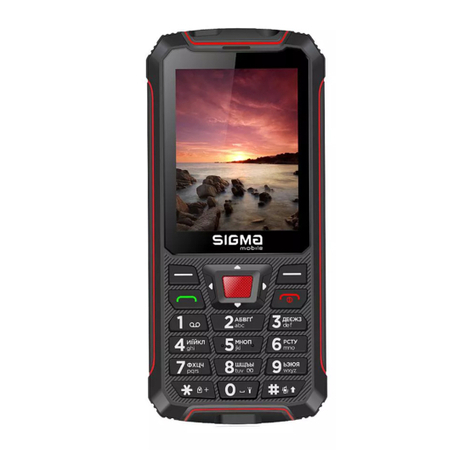Skytrac ISAT-100 Operating instructions

ISAT-100 Specifications, Operating Instructions
and Install Manual
ISAT-100-OPD-SOI
Applies to P/N: ISAT-100
Applies to Mod Status: AB
Document Revision: 02.010
April 9, 2013
SkyTrac Systems Ltd.
200-170 Rutland Road N
Kelowna, BC Canada
V1X 3B2
Tel. (250) 765-2393
Fax (250) 765-3767
Web: www.skytrac.ca
Copyright © 2013 SkyTrac Systems Ltd.
All rights reserved.
The document reference is online, please check the correspondence between the online documentation and the printed version.

SkyTrac Systems Ltd.
Document Rev. 02.010 ISAT-100-OPD-SOI ii
Restricted Proprietary and Confidential Information
Document Revision History
Rev ECO
Page Description Date Approval
01.20
- Initial Release July 2003 KWallace
01.30
012 S 4.6
Amendment to Install Notes:
Added upright mounting
requirement and vent hole
requirements.
Sept 18, 2003 KWallace
- S 4.6
Amendment to Install Notes:
Added paragraph on potential
Hydrogen release rate, suggested
install space and ventilation
requirements.
Oct 14, 2003 KWallace
- S 2.7
Amendment to Environmental
Test Summary: Section 9 and 22
Comments: Note 1.
Oct 16, 2003 KWallace
- S 2.8
Amendment to Continued
Airworthiness: Periodic
inspection notes
Oct 16, 2003 KWallace
- S 4.5
Amendment to Overview:
Added
point 9 regarding PDA usage. Nov 7, 2003 KWallace
- S 2.1 Amendment to Operating
Temperature Nov 18, 2003 KWallace
- S 4.8.2
Amendment to EMI Test
to be
consistent with EMI/RFI Test for
ISAT-100 (Doc # 238-50064-00)
Nov 18, 2003 KWallace
- S 1.2
Amendment to DO
-
160D:
Corrected DO-160D Category Nov 18, 2003 KWallace
- S 2.1 Amendment to Operating
Temperature Nov 20, 2003 KWallace
- S 2.7
DO
-
160D:
Section 4.5 Add
Category A4 Nov 20, 2003 KWallace
- S 4, A-B
Pg 26 Revised second line to read
“Equipment near active
INMARSAT terminals”
Mar 3, 2004 KWallace
The document reference is online, please check the correspondence between the online documentation and the printed version.

SkyTrac Systems Ltd.
Document Rev. 02.010 ISAT-100-OPD-SOI iii
Restricted Proprietary and Confidential Information
Document Revision History Continued
Rev ECO
Page Description Date Approval
- S 1.4, Pg
6, S 2.3,
2.4, Pg 7,
S 4.5, Pg
10, S 4.7,
Pg 18
Change discussion from two
separate antennae to one
combination antenna
Apr 13, 2004 KWallace
- Fig 4-2,
Appendix
A REAR
Both modified to illustrate
connecting to one combination
antenna
Apr 13, 2004 KWallace
- Pg 8 * * FAA Policy # 2001-01
Separate FADEC not required June 1, 2004 KWallace
01.40
019 S 4.6.1,
Pg 14 Amendment to Data Connector
Diagram and Pin Description Aug 19, 2004 KWallace
- Table 4.1,
Pg 16 Specified Pin J as Mission Switch Aug 19, 2004 KWallace
- S 4.6.1
Fig 4.3 Updated Connector Diagram
according to Table 4.1 Dec 16, 2004 KWallace
- S 4.8
Fig 4.5 Updated Connector Pinout Jan 5, 2005 KWallace
- S 4.6
Fig 4-2,
S 4.6.1
Fig 4-4,
Table 4-2
Updated 10-Pin Connector Pinout &
Description Table Jan 20, 2005 KWallace
01.41
- Updated Document Formatting Feb 1, 2005 KWallace
01.42
022 ISAT Rev 01.80 Release Feb 15, 2005 G. Pringle
01.43
026 Pg 1. Pg
6, Pg 14, Added instructions for identifying
the ISAT hardware version.. Apr 27, 2005 G.Pringle
01.44
- Pg 8, Added GPS not for navigational
purposes notice.
01.45
- P12 Remove reference to non existing
section.
01.46
- Pg 13 Added installation requirement that
system connectors must be
connected before system power is
applied. Added instructions for
determining which Mod the ISAT is.
The document reference is online, please check the correspondence between the online documentation and the printed version.

SkyTrac Systems Ltd.
Document Rev. 02.010 ISAT-100-OPD-SOI iv
Restricted Proprietary and Confidential Information
Document Revision History Continued
Rev ECO
Page Description Date Approval
01.47 027 All Updated SOI format implemented
Additional details on Maintenance
and Continued Airworthiness, and
Airworthiness Limitations were
added.
May 30, 2005 K.Wallace
01.48 051 Pg 10, 24,
25 Added Audio Interface Section Dec 15, 2005 T. Ratch
01.49 - Pg 7, Pg
11. DO-160D Test Qualification
Clarified. D0-160D Sec 21
corrected to Cat M.
Jan 20, 2006 T. Ratch
02.00 - Pg 1 Revision number changed to 02.00 Jan 26, 2006 T. Ratch
02.001
052,
088 Updated Address. Updated rev to
xx.(y)yy format. Aug 18, 2006 T. Ratch
02.002
124 8, 19 Added instructions how to do
functional test without PDA.
Corrected spelling any typos.
July 17, 2007 T. Ratch
02.003
0145
Add reference to Installation
Drawing July 28, 2008 T. Ratch
02.004
0165
Pg1, pg 4,
pg7 Updated applies to Statement; Pg 4
Add section ISAT-100 Installation
Kit; pg 7 delete section Installation
Kit and the list of material for the kit
Feb 24, 2009 T. Ratch
02.005
170 4 Add reference to ISAT-100
Installation Kit Bill of Materials
(DOC0159)
May 01, 2009 T. Ratch
02.006
195 2, 3, 6, 9,
12, 14, 15,
17, 19, 20,
22, 23
Made updates as specified in
NCR090414-001 Sep 15, 2009 T. Ratch
02.007
305 6,9 Added sideways mounting
orientation April 26, 2010
T.Ratch
02.008
386 13, 16, 18,
19, 20, 22 Added STS0021 as the new part
number for STS-ISAT-ANT.
Changed “18 – 30VDC” to “22 –
30VDC” in section 4.4. Removed
reference to ITRAX Palm Software.
Replaced activation instructions
with SkyWeb activation instructions.
Added description of what blinking
LED patterns mean. Corrected
spelling of syncro in section 4.7.1.
Dec 20, 2010 T. Ratch
2.009 392 6 Updated airworthiness limitations
for sideways installation Jan 24, 2011 T. Ratch
The document reference is online, please check the correspondence between the online documentation and the printed version.

SkyTrac Systems Ltd.
Document Rev. 02.010 ISAT-100-OPD-SOI v
Restricted Proprietary and Confidential Information
Disclaimer
Devices other than the ISAT-100 mentioned in this manual do not necessarily have
regulatory approval for installation in your airframe and may require additional approvals.
Please refer to the applicable STC for approval information.
Warning
Changes or modifications not expressly approved by SkyTrac Systems Ltd. could void the
user’s authority to operate the equipment.
WarrantyInformation
SkyTrac Systems Ltd (STS) warrants this product to be free of defects in materials and
workmanship, and that the product meets or exceeds approved factory acceptance test
requirements. STS reserves the right to replace any warranted product at its sole discretion
during the warranty period.
The Model ISAT-100 Airborne Data/Position Communicator is under warranty for one year
from date of shipment from SkyTrac Systems Ltd. For failed units caused by defective parts,
or workmanship, contact SkyTrac Systems for an RMA #. Once an RMA # has been
obtained, the unit should be returned to:
SkyTrac Systems Ltd.
#200-170 Rutland Road North
Kelowna, B.C. Canada
V1X 3B2
Proprietary Notice: The Information contained in this document is
proprietary and confidential to SkyTrac Systems Ltd.
Document Revision History Continued
Rev ECO
Page Description Date Author
2.010 567 v, 5, 6 Added disclaimer. Corrected warranty
information. Added temperature
variation to section 2.6 table. Updated
section 3.1 to state upside down
mounting is not approved.
April 9, 2013 J. James
The document reference is online, please check the correspondence between the online documentation and the printed version.

SkyTrac Systems Ltd.
Document Rev. 02.010 ISAT-100-OPD-SOI vi
Restricted Proprietary and Confidential Information
Table of Contents
1 GENERAL.....................................................................................................................................1
1.1 INTRODUCTION........................................................................................................................1
1.2 DESCRIPTION ..........................................................................................................................1
1.3 PURPOSE OF EQUIPMENT.......................................................................................................1
1.4 SYSTEM REQUIREMENTS........................................................................................................2
2 SPECIFICATIONS.......................................................................................................................3
2.1 PHYSICAL PROPERTIES ..........................................................................................................3
2.2 TECHNICAL SPECIFICATIONS ..................................................................................................3
2.2.1 GPS Receiver...................................................................................................................3
2.2.2 ISAT-100 Combination Antenna....................................................................................3
2.2.3 Satellite Transceiver........................................................................................................4
2.3 EMISSIONS COMPLIANCE........................................................................................................4
2.4 AUDIO INTERFACE...................................................................................................................4
2.5 ISAT-100 INSTALLATION KIT..................................................................................................4
2.6 ENVIRONMENTAL TEST SUMMARY..........................................................................................5
3 AIRWORTHINESS LIMITATIONS............................................................................................6
3.1 INSTALLATION LIMITATIONS.....................................................................................................6
3.2 OPERATION LIMITATIONS........................................................................................................6
4 INSTALLATION INSTRUCTIONS............................................................................................7
4.1 INSTALLATION REQUIREMENTS...............................................................................................7
4.2 UNPACKING AND INSPECTING.................................................................................................7
4.2.1 Identifying Your ISAT.......................................................................................................7
4.2.2 Equipment Packing Log..................................................................................................7
4.3 OVERVIEW...............................................................................................................................7
4.4 ISAT-100 INSTALLATION........................................................................................................8
4.4.1 Pin Locations and Connections ...................................................................................10
4.5 ANTENNA INSTALLATION .......................................................................................................16
4.6 PROGRAMMING PORT...........................................................................................................17
4.7 AUDIO INSTALLATION:...........................................................................................................18
4.7.1 Cautions:..........................................................................................................................18
4.7.2 AUDIO LEVEL Adjustment...........................................................................................18
4.7.3 Audio Output Impedance Selection.............................................................................18
4.7.4 MIC DC BIAS Selection ................................................................................................18
4.7.5 MIC LEVEL Adjustment ................................................................................................19
4.8 POST INSTALLATION TESTS..................................................................................................19
4.8.1 Initial Verification Test ...................................................................................................19
4.8.2 Post Installation/ Configuration....................................................................................20
4.8.3 EMI Test...........................................................................................................................20
5 OPERATING INSTRUCTIONS................................................................................................22
5.1 OPERATING INSTRUCTIONS ..................................................................................................22
The document reference is online, please check the correspondence between the online documentation and the printed version.

SkyTrac Systems Ltd.
Document Rev. 02.010 ISAT-100-OPD-SOI vii
Restricted Proprietary and Confidential Information
5.2 ACTIVATION...........................................................................................................................22
6 MAINTENANCE AND CONTINUED AIRWORTHINESS...................................................23
6.1 CONTINUED AIRWORTHINESS...............................................................................................23
6.2 MAINTENANCE INSTRUCTIONS..............................................................................................23
7 APPENDIX A..............................................................................................................................24
7.1 ISAT-100 FRONT PANEL DIAGRAM .....................................................................................24
7.2 ISAT-100 REAR PANEL DIAGRAM .......................................................................................25
8 APPENDIX B..............................................................................................................................26
8.1 CAUSES OF RF INTERFERENCE............................................................................................26
8.2 MITIGATION OF RF INTERFERENCE......................................................................................26
The document reference is online, please check the correspondence between the online documentation and the printed version.

SkyTrac Systems Ltd.
Document Rev. 02.010 ISAT-100-OPD-SOI Page 1 of 26
Restricted Proprietary and Confidential Information
1 GENERAL
1.1 Introduction
This publication provides technical information for the ISAT-100 Position/Data
Communicator (Mod AB), developed by SkyTrac Systems Ltd. The ISAT-100 will
provide voice communication, position reporting and messaging with global coverage
in near real time.
1.2 Description
The ISAT-100 contains a GPS (Global Positioning System) receiver, an L-Band
transceiver specifically designed to communicate with the Iridium®satellite system, a
battery which enables communications with the satellite system after airframe power
shutdown and a battery charging system. Control and interfacing is provided with a
low power single-board computer.
The ISAT-100 has been tested to the RTCA/DO-160D environmental categories
listed below. The tests demonstrated that the ISAT-100 does not exhibit any unsafe
performance when exposed to the specified environmental test conditions, and that
installation of the ISAT-100 in accordance with the installation instructions in this
Manual will not pose a hazard to the continued safe flight and landing of the aircraft.
RTCA/DO-160D Env. Cat. [(A4)(D1)]XAB[(SMB)(UF)]XXXXXXZBBXXXMXXXX
Appendix A illustrates the Front and Rear Panel layout of the ISAT-100.
1.3 Purpose of Equipment
The ISAT-100 is the primary hardware component of a system designed to provide
full duplex sat phone communication, automatic message reporting, 2-way
messaging and other data transfers. Data can be sent between an aircraft and any
point in the world having Internet access, via the Iridium®Low Earth Orbit (LEO)
satellites. Present position and text messages from the aircraft can be displayed on
any computer with Internet access and SkyTrac software. Position reporting intervals
are user defined. Base software displays current and historical position data including
latitude, longitude, GPS time, relative position (to a known way point), ground speed,
altitude and heading, in tabular format and on a map. Airtime, flight time, ETA,
distance traveled, time elapsed and other flight data is also displayed for instant
viewing. Flight reports can also be generated by unit and time frame (i.e. airtime/flight
time per day/week/month).
Operationally, the ISAT system can compliment flight following requirements for
commercial operators and provide vital position data and messaging services to
those operators conducting flight activities in remote areas.
The document reference is online, please check the correspondence between the online documentation and the printed version.

SkyTrac Systems Ltd.
Document Rev. 02.010 ISAT-100-OPD-SOI Page 2 of 26
Restricted Proprietary and Confidential Information
1.4 System Requirements
The ISAT system must receive GPS signals to enable the determination of its present
position and communicate (send/transmit) with the Iridium®LEO satellite system.
A Windows-based PC and a dedicated email address are required at the Base
Location.
Minimum Operating System Requirements for SkyTrac Base Software
−Windows 2003Windows 2000or Windows XP
−Pentium Type Processor – minimum 2.0 GHZ
−1 GB of RAM (Recommended 2+GB)
−1 GB of Disk Space
−Consistent Internet connection
−CD/DVD-ROM drive
Note: Due to required installation of the following components. This installation may
require 1 or more reboots.
•Microsoft Jet Engine
•.NET 2.0
•ODBC Drivers
•UltiCassini WebService (for FlightMap World)
•FlightTrac Suite Program Modules
Operational issues may arise when installing FlightTrac Suite behind firewalls, or
using proxy server settings. To prevent connection difficulties, your system
administrator or network consultant must handle local network connection and IP
issues. The SkyNet service transfers data on ports 80 and 443; therefore, these ports
must be open on a firewall and allow communication to skynet.skytrac.net.
FlightTrac Suite can be installed in a networked client/server configuration, or as a
stand-alone solution.
The document reference is online, please check the correspondence between the online documentation and the printed version.

SkyTrac Systems Ltd.
Document Rev. 02.010 ISAT-100-OPD-SOI Page 3 of 26
Restricted Proprietary and Confidential Information
2 SPECIFICATIONS
2.1 Physical Properties
Operating Temperature -15ºC to +55ºC (RTCA DO-160D)
-40ºC to +55ºC (manufacture test)
Size 10” (L) excluding connectors, 3.5” (H)
4.2” (W) plus 1.5 “ bottom mounting flange
Weight 2.3 kg (5.07 lbs)
Power Requirement Nominal standard 28VDC system bus via 3 Amp breaker.
*Actual consumption is 0.5 Amp typical, 1.5 Amp while
transmitting. Equipped with reverse voltage and transient
protection.
Mounting 6 x 3AN bolts, flange mount horizontally with mounting
brackets on the bottom.
Normal air circulation required: Do not cover vent holes
in top cover or in sides (2) of unit.
2.2 Technical Specifications
2.2.1 GPS Receiver
Receiving Method 12 Channel, Parallel Receiver
Acquisition time 48 seconds after power up (cold start)
0.1 seconds for re-acquisition.
Position accuracy Less than 25 m without Differential GPS
1-5m with Differential GPS - WAAS enabled
Acceleration 4 G max
2.2.2 ISAT-100 Combination Antenna
Active L1 GPS/Passive Iridium Antenna, low profile, moulded radome.
Height: 0.721 in. (18.31 mm)
Length: 5.026 in. (127.66 mm)
Width: 2.0 in. (55.88 mm)
Weight: 8.0 oz (226 g)
Voltage: 3.0 to 28.0 VDC @ 50 mA max
Gain (GPS antenna): 32dB min
The Iridium®satellite serving a Short Burst Data call can literally be anywhere in orbit
at a given moment in time. For this reason, it is imperative that the antenna be
mounted outside, as high as possible, in a horizontal position on the aircraft,
attempting to achieve a 360-degree view of the sky with minimal obstructions.
The document reference is online, please check the correspondence between the online documentation and the printed version.

SkyTrac Systems Ltd.
Document Rev. 02.010 ISAT-100-OPD-SOI Page 4 of 26
Restricted Proprietary and Confidential Information
2.2.3 Satellite Transceiver
Operating frequency 1616 MHz to 1626.5 MHz
*Power consumption Transmit (max) 7W
*The ISAT-100 is not classified as “Equipment known to have a high potential for interference” in accordance with FAA
Policy No.: ASW-2001-01 dated April 25, 2002. Separate FADEC testing is not required for this installation.
2.3 Emissions Compliance
Entity Document Title Document Number
US FCC Title 47 Code of Federal Regulations Section 15.109
US FCC Title 47 Code of Federal Regulations 1997 Section 25.202
ETSI Satellite Earth Stations and Systems (SES);
Harmonized EN for EN 301 441
2.4 Audio Interface
The Audio Output can provide 100 mW into 600 or 300 ohm nominal. The Audio Output is
short circuit protected.
Nominal microphone input voltage is 0.050 Vrms to 1.4 Vrms. Microphone input impedance
is 1000 ohms and provides an optional microphone excitation voltage. Refer to installation
instructions for configuration options.
2.5 ISAT-100 Installation Kit
The Installation Kit provided for the ISAT-100 is P/N 010000-2. The parts contents of the
Installation Kit can be found in the ISAT-100 Installation Kit Bill of Materials (DOC0159). It
contains mating connector to the ISAT-100, necessary hardware to attach it and antenna
connectors for normal installation.
The document reference is online, please check the correspondence between the online documentation and the printed version.

SkyTrac Systems Ltd.
Document Rev. 02.010 ISAT-100-OPD-SOI Page 5 of 26
Restricted Proprietary and Confidential Information
2.6 Environmental Test Summary
The following table summarizes DO-160D Environmental Testing for the SkyTrac
ISAT-100 Airborne Position/Data Communicator.
Section of
DO-160D
Condition
Category
Comments
4.5
4.6, 4.6.2 Temperature & Altitude
Rapid decompression [A4, D1] Meets category requirements
5.0 Temperature Variation B Meets category requirements
6.0 Humidity A Meets category requirements
7.0 Operational Shock and
Crash Safety B Meets category requirements
8.0 Vibration
1)
SMB/UF Meets fixed wing standard
vibration, helicopter robust vibration
9.0 Explosion Proofness X No test required. See Note 1.
10.0 Waterproofness X No test required
11.0 Fluid Susceptibility X No test required
12.0 Sand and Dust X No test required
13.0 Fungus Resistance X No test required
14.0 Salt Spray X No test required
15.0 Magnetic Effect Z <0.3m for 1 degree deflection
16.0 Power Input B Meets category requirements
17.0 Voltage Spike B Meets category requirements
18.0 AF Conducted
Susceptibility X No test required
19.0 Induced Signal
Susceptibility X No test required
20.0 RF Susceptibility X No test required
21.0 RF Emissions M Meets category requirements
22.0 Lightning Induced
Transient Susceptibility X No test required. See Note 1.
23.0 Lightning Direct Effects X No test required
24.0 Icing X No test required
25.0 ESD X No test required
Note 1: Analysis provided to Transport Canada meets category requirements.
The document reference is online, please check the correspondence between the online documentation and the printed version.

SkyTrac Systems Ltd.
Document Rev. 02.010 ISAT-100-OPD-SOI Page 6 of 26
Restricted Proprietary and Confidential Information
3 AIRWORTHINESS LIMITATIONS
3.1 Installation Limitations
The following installation regulations must be adhered to:
•The ISAT-100 must be installed with the attached mounting brackets on the bottom to
insure proper ventilation of the ISAT unit (see section 2.1 for details).
•The ISAT-100 must be installed in a location that provided adequate ventilation
space, as specified in section 4.4.
•Installation of the ISAT-100 for operation above 16,000 ft is only approved for an
upright orientation. If installed in a sideways orientation, the ISAT-100 may vent
electrolyte from the internal sealed lead acid battery if 16,000 ft altitude is exceeded.
•The ISAT-100 must not be mounted upside down.
3.2 Operation Limitations
GPS Information provided by ISAT not intended for navigational purposes.
The document reference is online, please check the correspondence between the online documentation and the printed version.

SkyTrac Systems Ltd.
Document Rev. 02.010 ISAT-100-OPD-SOI Page 7 of 26
Restricted Proprietary and Confidential Information
4 INSTALLATION INSTRUCTIONS
IMPORTANT NOTICE: All system interconnect cables must be connected
before power is applied to the system.
4.1 Installation Requirements
When installing the ISAT-100 the installer must have a working knowledge of aircraft
electronics installation, and be a holder of either an FAA Repairman’s Certificate or a
Transport Canada equivalent. All installations should meet the requirements of FAA
advisory circular AC43.13-1B.
4.2 Unpacking and Inspecting
4.2.1 Identifying Your ISAT
If the ISAT has a MOD AB Label, then this installation manual applies to the ISAT. If
the ISAT does not have a MOD AB label, please use the version of this manual
appropriate for your ISAT.
4.2.2 Equipment Packing Log
Save the original shipping container in case of need for return due to damage or
warranty claims. Check that each item listed on the packing slip has been shipped in
the container. Verify and record the IMEI Number of the ISAT-100. This information is
required when contacting SkyTrac Systems to activate the satellite communications
services.
4.3 Overview
The main tasks for this installation are listed below:
1. Check the contents of the installation kit (P/N 010000-2) against those listed in
Section 4.4 of this manual.
2. Determine the approximate location of the ISAT-100, combination GPS/Passive
Iridium antenna.
Note: Factors to be considered to determine install location include
maximum antenna coax lengths and minimum distance between
existing GPS and ISAT-100 combination antenna.
If ISAT-100 is to be installed near an active INMARSAT terminal
or if the aircraft that the ISAT-100 is installed in operates near an
active INMARSAT terminal please see Appendix B.
3. Mount the ISAT-100.
4. Mount the ISAT-100 combination antenna.
5. Route the coax cables for Iridium and GPS antenna signals to the ISAT-100
combination antenna.
The document reference is online, please check the correspondence between the online documentation and the printed version.

SkyTrac Systems Ltd.
Document Rev. 02.010 ISAT-100-OPD-SOI Page 8 of 26
Restricted Proprietary and Confidential Information
6. Create the wire harness for the ISAT-100. Refer to ISAT-100 Optional Equipment
Wiring Diagram (DOC0029) if the applicable STC drawings are not available.
7. If a PDA is going to be connected to the ISAT-100, check the data port using a
PDA loaded with ITrax software. Refer to the ITRAX manual for more information.
8. If a PDA is used:
•Make sure it has a serial connector
•RS 232 cable should not exceed 40 ft.
1. Must use shielded RS 232 cable
4.4 ISAT-100 Installation
The ISAT-100 is designed to be secured by its mounting rails to the airframe using six
(6) AN-3 bolts and should be installed using the ISAT installation kit (P/N KIT-ISAT-
100). Figure 4-1: ISAT-100 Mounting Rails illustrates the locations for mounting
screws in the mounting rails on the sides of the ISAT-100.
It is important to achieve a good electrical bond between the ISAT-100 enclosure
and the airframe. Remove paint if necessary and prepare the mounting holes.
The document reference is online, please check the correspondence between the online documentation and the printed version.

SkyTrac Systems Ltd.
Document Rev. 02.010 ISAT-100-OPD-SOI Page 9 of 26
Restricted Proprietary and Confidential Information
FIGURE4-1 ISAT-100MountingRails
Important Note:
The ISAT-100 contains a sealed lead-acid battery as a backup power source. Under
extreme fault conditions, this device may release Hydrogen gas at a rate of up to
0.84 in3per minute. The installer must install this device in an area with sufficient
ventilation and comply with FAR 29.1353 (c) for the final installation design.
The ISAT-100 must be mounted in an upright position or a sideways position
and none of the venting holes in the top cover or in either side panel should be
covered at any time. The ISAT-100 may not be mounted inverted. (See
Installation Limitations.)
The free air volume around the ISAT-100 installation must be at least 8 cubic feet.
Like any other transmitter, the ISAT-100 should be installed as far from aircraft
apertures (such as windows) and as far from radio receiver antennae as practical.
Figure 4.2 illustrates the Block Diagram for the ISAT-100.
Refer to ISAT-100 Optional Equipment Wiring Diagram (DOC0029) if the applicable
STC drawings are not available.
The document reference is online, please check the correspondence between the online documentation and the printed version.

SkyTrac Systems Ltd.
Document Rev. 02.010 ISAT-100-OPD-SOI Page 10 of 26
Restricted Proprietary and Confidential Information
FIGURE4-2 ISAT-100Block Diagram
4.4.1 Pin Locations and Connections
The identification letters and descriptions for the 19-pin System Connector and 10-pin
Data Connector, located on the front of the ISAT-100, are listed in Tables 4-1 and 4.2
and illustrated in Figures 4-3 and 4.4 respectively.
Both Pin B and Pin C on the System connector must be grounded in order to
enable the internal battery.
Use AWG 20 wire to hook up the 28VDC aircraft main power source protected
through a 3 Amp breaker to the ISAT-100. It is important to remember that the ISAT-
100 will sense the onrush of 28VDC and will send this event, together with a
timestamp, to the dispatch centre in order to signal the beginning of a flight. Thus, the
ISAT-100 should receive mains power as soon as the aircraft’s master or avionics
switch is turned on. The remaining Pins on J1 are reserved for future firmware
implementations.
The document reference is online, please check the correspondence between the online documentation and the printed version.

SkyTrac Systems Ltd.
Document Rev. 02.010 ISAT-100-OPD-SOI Page 11 of 26
Restricted Proprietary and Confidential Information
FIGURE4-3 SystemConnector Diagram
The document reference is online, please check the correspondence between the online documentation and the printed version.

SkyTrac Systems Ltd.
Document Rev. 02.010 ISAT-100-OPD-SOI Page 12 of 26
Restricted Proprietary and Confidential Information
Table 4-1 SystemConnector -Pin Description
19 Pin System Connector
Pin # Description
A +28 VDC Main Power In
B Ground (Power)
C Battery Disconnect
D Analog Input #1 0-30VDC
E Analog Input #2 0-30VDC
F Analog Input #3 0-30VDC
G Analog Input #4 0-30VDC
H Analog Input #5 0-30VDC
J Voltage Seeking - Digital Input #1 (Mission Switch)
K Voltage Seeking - Digital Input #2
L Ground Seeking - Digital Input #3
M Voltage Seeking - Digital Input #4
N Ground Seeking - Digital Input #5 (Squat/Collective)
P Voltage Seeking - Digital Input #6 (Engine On/Off)
R Ground Seeking - Digital Input #7 (Emergency)
S Current Sinking Digital Output #1
T Current Sinking Digital Output #2
U Current Sinking Digital Output #3
V Differential GPS Input
The above digital inputs on Pin N, P & R are set as factory default. Contact your
SkyWeb Hardware Manager if different configuration is required.
The document reference is online, please check the correspondence between the online documentation and the printed version.

SkyTrac Systems Ltd.
Document Rev. 02.010 ISAT-100-OPD-SOI Page 13 of 26
Restricted Proprietary and Confidential Information
System Connector –Pin Descriptions (Detailed)
Pin A +28 VDC Main Power In
This is the main power supply to the ISAT-100. The operating range is 22 - 30VDC
(18 – 30VDC for emergency operation).
Pin B - Ground (Power)
This is the power ground connection for the ISAT-100.
Pin C - Battery Disconnect
Connect pin C to pin B or ground to enable the ISAT-100’s internal battery. This
feature allows the ISAT-100 with the connector removed to be placed in storage for
several months without completely draining the internal battery, which could
otherwise result in damage.
Pin D - Analog Input #1
An analog voltage level between 0 and +30 volts, when applied to pin D, will be
converted to a digital value with 12 bits of resolution.
Pin E - Analog Input #2
An analog voltage level between 0 and +30 volts, when applied to pin E, will be
converted to a digital value with 12 bits of resolution.
Pin F - Analog Input #3
An analog voltage level between 0 and +30 volts, when applied to pin F, will be
converted to a digital value with 12 bits of resolution.
Pin G - Analog Input #4
An analog voltage level between 0 and +30 volts, when applied to pin G, will be
converted to a digital value with 12 bits of resolution.
Pin H - Analog Input #5
An analog voltage level between 0 and +30 volts, when applied to pin H, will be
converted to a digital value with 12 bits of resolution.
Pin J - Digital Input #1 – Voltage Seeking - (Mission)
A positive input between 5V and 28V, when applied to pin J, will produce a digital
logic high.
Pin K - Digital Input #2 - Voltage Seeking
A positive input between 5V and 28V, when applied to pin K, will produce a digital
logic high.
Pin L - Digital Input #3 - Ground Seeking
A ground input when applied to pin L, will produce a digital logic high.
The document reference is online, please check the correspondence between the online documentation and the printed version.
Table of contents

















